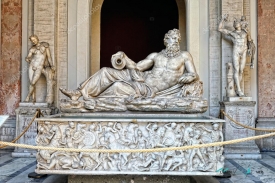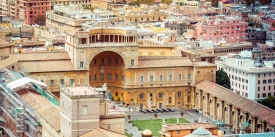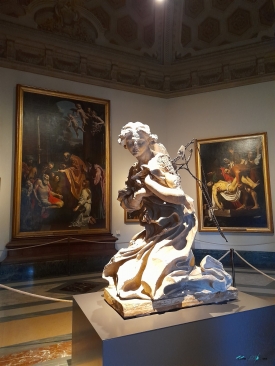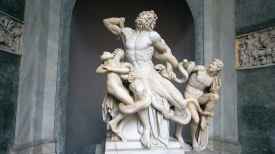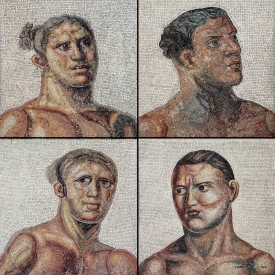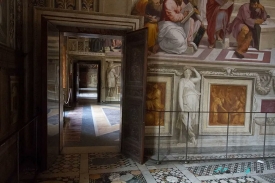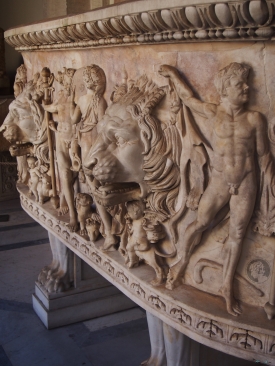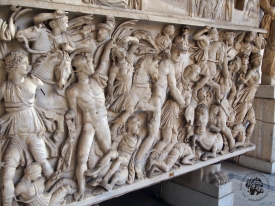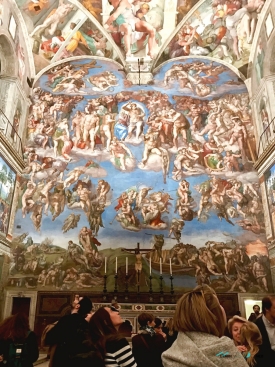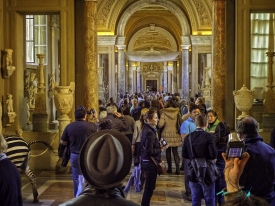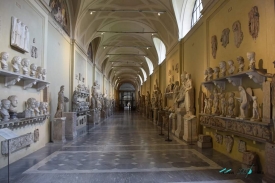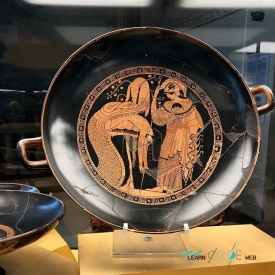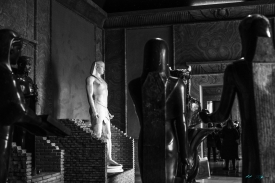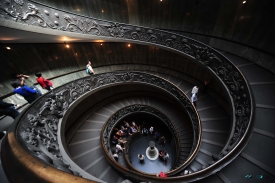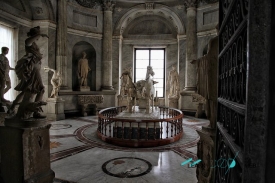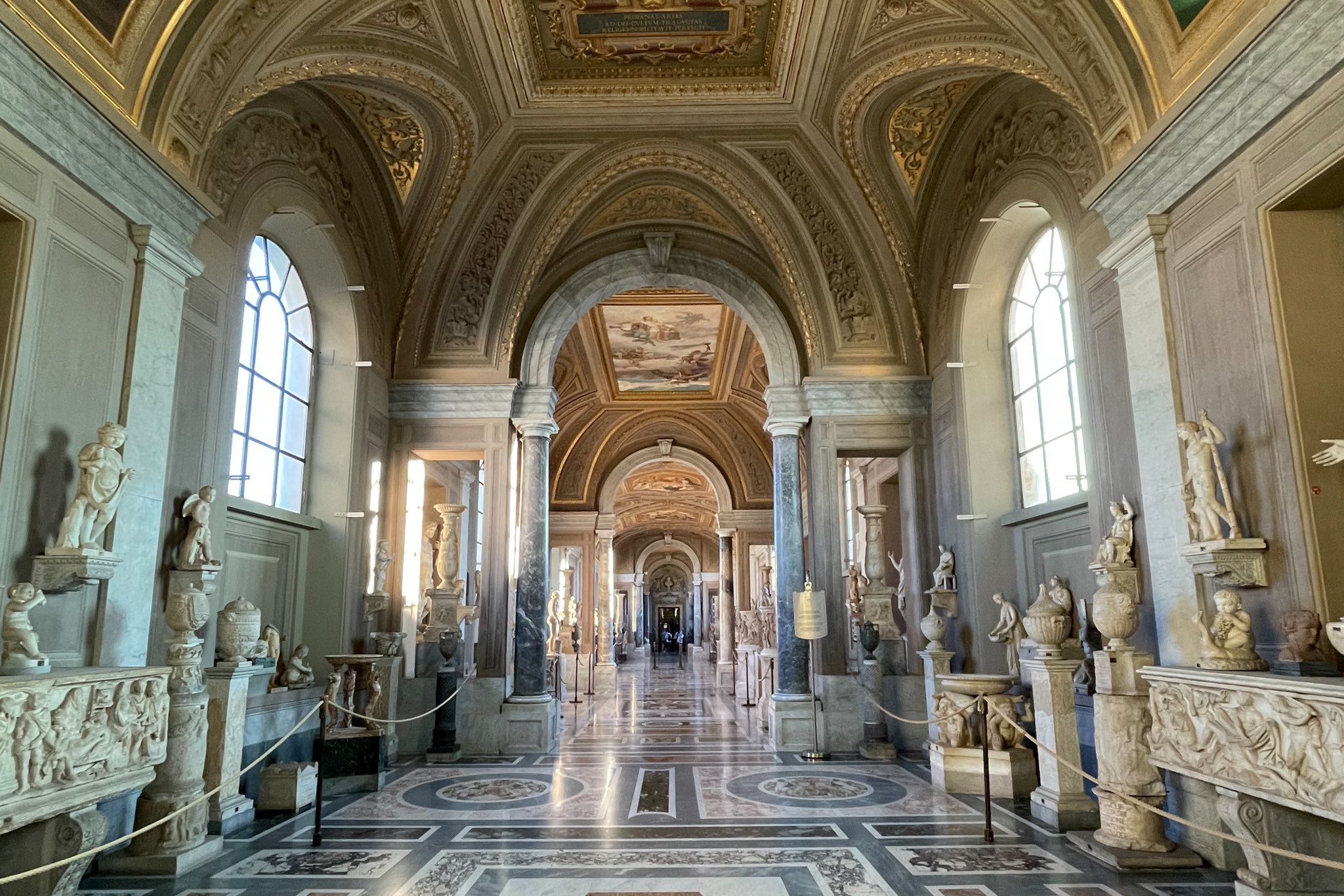
The Vatican Museums, located within Vatican City, are among the world's most renowned and extensive museum complexes. They house an impressive collection of art and historical artifacts amassed by the Roman Catholic Church over centuries. The museums were founded by Pope Julius II in the early 16th century and have since become a must-visit destination for art lovers and history enthusiasts alike. This article delves into the rich history, notable highlights, and practical information for visiting the Vatican Museums, including the lesser-known Capilla Nicolina.
The Vatican Museums trace their origins back to the early 16th century when Pope Julius II began collecting sculptures. Over the centuries, subsequent popes expanded the collection, adding masterpieces from various periods and regions. The museums now encompass 54 galleries, or salas, with exhibits ranging from classical antiquities to modern religious art.
Visitors can spend hours gazing up at the intricate details and vibrant colors of the ceiling, which Michelangelo painted while lying on his back on scaffolding. The Sistine Chapel is also used for the Papal Conclave, where new popes are elected, adding to its historical and religious significance.
"The School of Athens" is celebrated for its portrayal of ancient philosophers, including Plato and Aristotle, engaged in a lively discussion. The painting's composition, use of perspective, and lifelike figures exemplify Raphael's mastery and the intellectual spirit of the Renaissance.
Walking through the Gallery of Maps, visitors can admire the meticulous artistry and historical accuracy of these maps, which were based on the latest cartographic knowledge of the time. The vibrant colors and intricate details make this gallery a visual delight and a testament to the Renaissance's scientific and artistic advancements.
The museum's collection includes the famous "Statue of Anubis," a beautifully preserved representation of the jackal-headed god of the afterlife. The Gregorian Egyptian Museum provides a unique opportunity to connect with a civilization that has fascinated people for millennia.
One of the museum's highlights is the "Sarcophagus of the Spouses," a beautifully crafted funerary monument depicting a reclining couple. This piece exemplifies the Etruscans' skill in sculpture and their unique approach to death and the afterlife.
Leonardo da Vinci's "St. Jerome in the Wilderness" is one of the gallery's standout pieces. This unfinished work showcases Leonardo's meticulous attention to anatomical detail and his innovative use of light and shadow. Caravaggio's "Deposition," with its dramatic use of chiaroscuro, is another highlight, demonstrating his revolutionary approach to painting.
The frescoes in the Niccoline Chapel depict scenes from the lives of two important saints: St. Stephen, the first Christian martyr, and St. Lawrence, a deacon of Rome who was martyred during the persecution of Christians. These vivid and beautifully detailed frescoes are notable for their use of color, perspective, and the delicate portrayal of figures, showcasing Fra Angelico's mastery of the early Renaissance style.
The chapel's intimate size and serene atmosphere provide a stark contrast to the grandeur of other Vatican spaces like the Sistine Chapel. It offers a more personal and reflective experience, allowing visitors to appreciate the spiritual and artistic significance of Fra Angelico's work up close.
While the Niccoline Chapel is not as widely known or visited as some of the Vatican's other treasures, it is a must-see for those interested in Renaissance art and history. Access to the chapel is typically limited and may require special arrangements or a guided tour, making it a unique and exclusive experience within the vast Vatican Museums complex.
For those planning to visit the Vatican Museums, it's advisable to book tickets in advance to avoid long queues. The museums are open Monday to Saturday, with special openings on the last Sunday of each month. Guided tours are available, offering deeper insights into the rich history and significance of the artworks on display.
The Vatican Museums are not only a treasure trove of artistic masterpieces but also a testament to the church's patronage of the arts. They offer a unique journey through history, art, and culture, attracting millions of visitors each year. Whether you're an art aficionado or simply curious about the world's cultural heritage, the Vatican Museums provide an unforgettable experience.
A visit to the Vatican Museums is more than just a tour; it's an immersive journey through some of humanity's greatest artistic achievements. From the awe-inspiring Sistine Chapel and Raphael Rooms to the detailed maps in the Gallery of Maps and the ancient treasures of the Gregorian Egyptian Museum, there is something for everyone to discover.
The lesser-known Capilla Nicolina adds an element of exclusivity and intimacy to the visit, offering a serene space to reflect on the artistry and spirituality of the Renaissance. Whether you're planning your first visit or returning to explore further, the Vatican Museums continue to captivate and inspire, making them a must-see destination for anyone visiting Rome.
The Vatican Museums trace their origins back to the early 16th century when Pope Julius II began collecting sculptures. Over the centuries, subsequent popes expanded the collection, adding masterpieces from various periods and regions. The museums now encompass 54 galleries, or salas, with exhibits ranging from classical antiquities to modern religious art.
The Sistine Chapel: A Masterpiece of Renaissance Art
One of the most famous sections of the Vatican Museums is the Sistine Chapel. Known for its breathtaking ceiling painted by Michelangelo, the Sistine Chapel is a cornerstone of Renaissance art. Michelangelo’s frescoes, including the iconic "Creation of Adam" and "The Last Judgment," are considered some of the greatest achievements in the history of art.Visitors can spend hours gazing up at the intricate details and vibrant colors of the ceiling, which Michelangelo painted while lying on his back on scaffolding. The Sistine Chapel is also used for the Papal Conclave, where new popes are elected, adding to its historical and religious significance.
The Raphael Rooms: High Renaissance Splendor
Another highlight of the Vatican Museums is the Raphael Rooms. These four rooms were painted by Raphael and his workshop, showcasing the High Renaissance's artistic grandeur. The frescoes in these rooms depict various religious and philosophical themes, with "The School of Athens" being one of the most famous."The School of Athens" is celebrated for its portrayal of ancient philosophers, including Plato and Aristotle, engaged in a lively discussion. The painting's composition, use of perspective, and lifelike figures exemplify Raphael's mastery and the intellectual spirit of the Renaissance.
The Gallery of Maps: A Cartographic Marvel
The Gallery of Maps is another must-see attraction within the Vatican Museums. This long corridor features a series of topographical maps of Italy, painted in the late 16th century. The maps are incredibly detailed and provide a fascinating glimpse into the geography and politics of Renaissance Italy.Walking through the Gallery of Maps, visitors can admire the meticulous artistry and historical accuracy of these maps, which were based on the latest cartographic knowledge of the time. The vibrant colors and intricate details make this gallery a visual delight and a testament to the Renaissance's scientific and artistic advancements.
The Gregorian Egyptian Museum: Ancient Treasures
For those interested in ancient civilizations, the Gregorian Egyptian Museum is a highlight. Established by Pope Gregory XVI in 1839, this museum houses a remarkable collection of Egyptian artifacts. Visitors can explore mummies, sarcophagi, statues, and everyday objects that offer insights into ancient Egyptian life and beliefs.The museum's collection includes the famous "Statue of Anubis," a beautifully preserved representation of the jackal-headed god of the afterlife. The Gregorian Egyptian Museum provides a unique opportunity to connect with a civilization that has fascinated people for millennia.
The Gregorian Etruscan Museum: Exploring Etruscan Heritage
Adjacent to the Gregorian Egyptian Museum is the Gregorian Etruscan Museum, which focuses on the Etruscan civilization that predated ancient Rome. This museum features artifacts such as pottery, jewelry, and sculptures that reveal the Etruscans' sophisticated culture and artistic achievements.One of the museum's highlights is the "Sarcophagus of the Spouses," a beautifully crafted funerary monument depicting a reclining couple. This piece exemplifies the Etruscans' skill in sculpture and their unique approach to death and the afterlife.
The Vatican Pinacoteca: A Collection of Masterpieces
The Vatican Pinacoteca, or art gallery, boasts an impressive collection of paintings from various periods. Visitors can admire works by renowned artists such as Leonardo da Vinci, Caravaggio, Raphael, and Giotto. The gallery's 18 rooms are arranged chronologically, allowing visitors to trace the evolution of European art from the Middle Ages to the 19th century.Leonardo da Vinci's "St. Jerome in the Wilderness" is one of the gallery's standout pieces. This unfinished work showcases Leonardo's meticulous attention to anatomical detail and his innovative use of light and shadow. Caravaggio's "Deposition," with its dramatic use of chiaroscuro, is another highlight, demonstrating his revolutionary approach to painting.
The Capilla Nicolina: A Hidden Gem
The Capilla Nicolina, also known as the Niccoline Chapel, is a hidden gem within the Vatican Museums, located in the Apostolic Palace. It is named after Pope Nicholas V, who commissioned its construction in the mid-15th century. This chapel is renowned for its exquisite frescoes painted by the early Renaissance artist Fra Angelico and his assistants.The frescoes in the Niccoline Chapel depict scenes from the lives of two important saints: St. Stephen, the first Christian martyr, and St. Lawrence, a deacon of Rome who was martyred during the persecution of Christians. These vivid and beautifully detailed frescoes are notable for their use of color, perspective, and the delicate portrayal of figures, showcasing Fra Angelico's mastery of the early Renaissance style.
The chapel's intimate size and serene atmosphere provide a stark contrast to the grandeur of other Vatican spaces like the Sistine Chapel. It offers a more personal and reflective experience, allowing visitors to appreciate the spiritual and artistic significance of Fra Angelico's work up close.
While the Niccoline Chapel is not as widely known or visited as some of the Vatican's other treasures, it is a must-see for those interested in Renaissance art and history. Access to the chapel is typically limited and may require special arrangements or a guided tour, making it a unique and exclusive experience within the vast Vatican Museums complex.
Practical Information for Visitors
For those planning to visit the Vatican Museums, it's advisable to book tickets in advance to avoid long queues. The museums are open Monday to Saturday, with special openings on the last Sunday of each month. Guided tours are available, offering deeper insights into the rich history and significance of the artworks on display.
The Vatican Museums are not only a treasure trove of artistic masterpieces but also a testament to the church's patronage of the arts. They offer a unique journey through history, art, and culture, attracting millions of visitors each year. Whether you're an art aficionado or simply curious about the world's cultural heritage, the Vatican Museums provide an unforgettable experience.
A visit to the Vatican Museums is more than just a tour; it's an immersive journey through some of humanity's greatest artistic achievements. From the awe-inspiring Sistine Chapel and Raphael Rooms to the detailed maps in the Gallery of Maps and the ancient treasures of the Gregorian Egyptian Museum, there is something for everyone to discover.
The lesser-known Capilla Nicolina adds an element of exclusivity and intimacy to the visit, offering a serene space to reflect on the artistry and spirituality of the Renaissance. Whether you're planning your first visit or returning to explore further, the Vatican Museums continue to captivate and inspire, making them a must-see destination for anyone visiting Rome.



